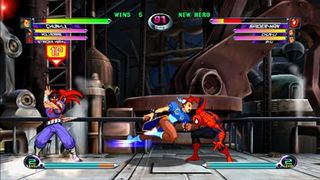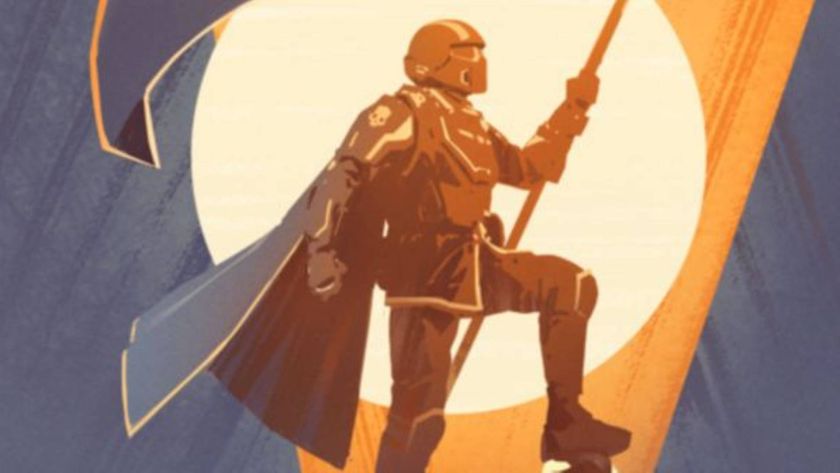12DOVE Verdict
Pros
- +
Ridiculous amounts of FF fan service
- +
Incredibly fun
- +
once you know what you're doing
- +
The chance to slap Cloud's whiny emo yap shut
Cons
- -
Underlying mechanics can get confusingly complex
- -
Camera tends to get hung up on walls
- -
low ceilings
- -
The unholy bastard of a final boss
Why you can trust 12DOVE
Crossover fighting games are nothing new, and they always tend to have one thing in common: From Super Smash Bros. to Marvel vs Capcom 2, they’re less about exploring what happens when disparate universes come together, and more about seeing how hard those universes can wordlessly kick each other in the teeth. It’s almost always fun, but for fans invested in the stories and characters of the crossover properties, it often feels like something’s missing from the experience.

To say Dissidia Final Fantasy isn’t like that would be a gross understatement. Bringing together a cast of 20 heroes and villains from the first 10 Final Fantasy games (plus two secret ones from XI and XII), it blends RPG elements with deceptively simple one-on-one fighting to create a crossover fighter unlike any seen before. It also puts about as much emphasis on story and character interaction as it does on fighting, and the action is supported by dozens of lengthy, densely chatty cutscenes, most of them devoted to just showing how all these characters interact with one another.

There’s a fresh plot behind these meetings, revolving around the gods Cosmos and Chaos gathering champions for one last, end-of-the-universe battle. But ultimately, how much you care about it all will tie in directly to how big of a Final Fantasy fan you are. If the thought of FFVII’s Sephiroth having a conversation with FFVIII’s Squall gives you fanboy/girl chills, or if you’ve always wanted to see FFIV’s Cecil reconcile with his brother/nemesis Golbez, then the stories that unfold here are a huge treat.
For everyone else, well… at least you can skip the cutscenes.

But what%26rsquo;s it like?
Putting story aside – for now – the action revolves around seemingly simple, one-on-one battles in relatively huge, open 3D arenas. Dissidia’s structured more like a third-person action game than a traditional fighter, with the camera chasing behind you, and while you’re able to easily lock onto your opponent, you’re also free to ignore them and run around the increasingly elaborate stages.
You’ll have two attack types at your disposal: simple ones that sap your opponent’s attack power (or “Bravery,” measured in onscreen points) and build up your own, and more elaborate ones that can knock HP off his or her life bar. These attacks can later be swapped out and supplemented with new ones as you level up and learn new skills, and they vary wildly from character to character. Some fighters favor lunging sword strikes, others wield homing destructive spells and plenty of them will end up using both as they make their way through the game.


This is a good place to mention that gravity has little effect on your fighters, and they’re able to grind on rails, run up walls and stay airborne indefinitely through continual dashing, air-dodging and hopping. It gives the battles a distinctly Dragon Ball Z-ish flavor, with characters constantly flying, weaving and diving at one another in midair. More difficult battles practically require this, as staying above your opponent and continually dodging can be essential to staying alive. The more you dash around in midair, though, the greater the risk of the camera getting suddenly caught up on a wall or low ceiling, obscuring your view of the enemy at a crucial moment.
After keeping this up for a while, though, these dogfights start to get aimless and unfocused. Often to the point that, well, some battles feel weirdly like this:

That’s the combat in a nutshell, but we’ve barely scratched the surface. The actual fighting is just the beginning of what Dissidia has to offer, and those who choose to follow its rabbit hole will find that it runs intimidatingly deep.
More info
| Genre | Role Playing |
| Description | Dissidia: Final Fantasy delivers a great experience to fans with its deep storylines and presentation. For non-fans? One of the best fighting games for the portable system. |
| Franchise name | Final Fantasy |
| UK franchise name | Final Fantasy |
| Platform | "PSP" |
| US censor rating | "Teen" |
| UK censor rating | "Rating Pending" |
| Release date | 1 January 1970 (US), 1 January 1970 (UK) |

Ex Nintendo PR managers say the Switch 2 generation is likely to see the retirement of "several of the major developers at Nintendo who we have known for 40 something years"

Helldivers 2 CEO says industry layoffs have seen "very little accountability" from executives who "let go of one third of the company because you made stupid decisions"

Spider-Man: Brand New Day - How Peter Parker and Mary Jane's break up led to one of the wall-crawler's most transformative comic eras











